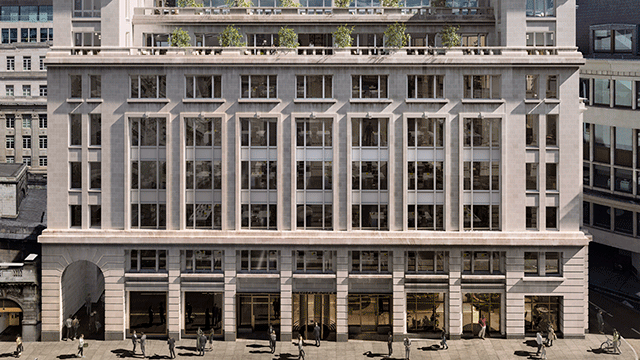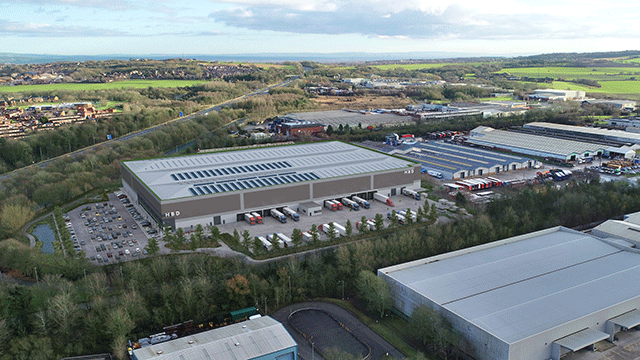by Tony Gregory
For a few brief days in January both the national and Yorkshire media had a field-day as archaeologists of the York Archaeological Trust working on the site of the old Queens Hotel in York uncovered remains of a massive Roman stone building, with walls 6 ft thick. It was a spectacular discovery, but spectacular archaeological discoveries are being made all the time by archaeologists working in Britain. So why did this one make the headlines?
The reason is, quite simply, that it inadvertently pressed the right buttons; the situation fitted journalists’ preconceptions and they could wheel out the traditional slogans. This story worked for them because archaeologists were “racing against time” and developers were “about to destroy priceless archaeological remains”; because it took place in a city that is identified with archaeology in the public mind; and because its cause was taken up by some loud local voices.
In these days there are many property developers who know from experience that this sort of storm is by no means inevitable, and that it is possible for the archaeology of a development site to be dealt with quickly and efficiently by means of a mutually satisfactory agreement between the developer and the archaeologists; this is precisely what was happening on the nearby Lendal Bridge site, only a few hundred yards away, where a large area of York’s waterfront was being excavated by the York Archaeological Trust with the financial backing of Stakis Land & Estates in advance of a proposed hotel.
But, as a result of the Queens Hotel storm, there are probably some others who will look a little more warily at any site on which there are likely to be archaeological constraints. Should they in fact be wary? And what form are these constraints likely to take?
Life is made more difficult by the fact that the situation can vary wildly from area to area — sometimes even from site to site. The organisation of archaeology, and its relationship to planning and development procedures, varies confusingly from one area to another.
This calls for a quick guide through the morass; what are the constraints, and what is the developer likely to have to do about them? At the national level a number of archaeological sites are protected by the Ancient Monuments and Archaeological Areas Act 1979.
Scheduled sites
Some sites are Scheduled Ancient Monuments: currently there are about 13,000 of these, but English Heritage, the quango to which most responsibilities for archaeology have been developed by the Department of the Environment, has recently begun a programme to increase this three- or four-fold. They can range in size from a single structure, like a bridge, to a whole Roman town. They can range in age and apparent significance from Stonehenge to a 20th-century gunnery dome, and in “obviousness” from a great medieval abbey to an area of garden in a historic town, below which lie the invisible but untouched remains of Roman houses.
All these scheduled sites share the same measure of protection; the consent of the Secretary of State for the Environment (Scheduled Monument Consent or SMC) is needed for work on them, whether that work is the construction of a new building, dumping, flooding, or ploughing a site that was previously pasture land. The DOE takes the advise of English Heritage, and if consent is given it is liable to have conditions attached to it about the way in which the work is to be done; there is usually provision for archaeological involvement which may range from a large-scale excavation to a more casual watching brief, but under any circumstances the applicant would be expected to meet the costs.
AAIs
At a slightly lower level of control are Areas of Archaeological Importance — these are specified areas under the Act, not just vague ideas. Currently only five areas are so designated — the historic town cores of Canterbury, Chester, Exeter, Hereford and York. Here there is no provision for any consent, but an operations notice must be served giving notice of the work starting. During that six months any archaeological work that is needed can take place, and if necessary there is the statutory right of access for a designated archaeological body to carry out this work, although normally, of course, it would be done by negotiation with the owner of the site.
Other sites
The above account for only a tiny fraction of the total number of archaeological remains. Of the rest — and any county is liable to contain many thousands of archaeological sites of various sorts — the fate is determined mainly by the local planning authority. This is where the local flavour of infinite variety is added. There are many different policies in the various county and district councils. In some cases these are codified in structure plans, while in others they have evolved through usage.
A common approach is that planning permission is only given provided that a satisfactory archaeological agreement is reached between the applicant and the local archaeological body. An agreement that satisfies the archaeologists will normally contain three elements — access, an agreed timetable, and financing of the excavation, as well as post-excavation work, by the applicant. This is enshrined in some structure plans, such as Norfolk’s, which reads:
3.10.52 Development which would affect sites of outstanding archaeological importance will only be permitted under exceptional circumstances.
3.10.53 On other sites of archaeological importance and where there is no overriding case for preservation, development will not normally be permitted unless agreement has been reached to provide for the recording, and, where desirable, the excavation of such sites.
3.10.54 … In normal circumstances it is expected that agreements for recording and excavation will include provision for the costs to be met by the developer.
At the other end of the scale are the non-interventionist councils like York, where a developer might be recommended to have discussions with the York Archaeological Trust, but no archaeological conditions are applied. Here the archaeologists make their agreements with developers by negotiation alone assisted by more subtle pressures.
The subtle pressures
In such circumstances, where no conditions are enforced as part of the planning process, developers are still agreeing to make substantial financial contributions to the archaeological work on their sites, and allow generous periods of time for access; one obvious motivation is public relations. In city centres, the name of the developer displayed large and frequently around the excavation creates a good image. But more important is the “get archaeology out of your hair” motive; by reaching agreement which allows archaeological access to the site for a fixed period of time, developers can ensure that they have a free hand, with an unencumbered site after the date at which the agreement ends. A code of practice for such circumstances has been drawn up by the British Archaeologists and Developers Liaison Group (obtainable from the Museum of London and from the British Property Federation) to ensure that such agreements work to the mutual advantage of both parties.
The archaeologists
The archaeological bodies who do the work are as varied as the planning processes with which they have to work. In some areas there are archaeological units, often employed by the county councils, who would expect to do the excavations and watching briefs required. While they have a core staff paid for by the county council, they need finance to take on the staff for individual projects. In other areas there are archaeological trusts, independent, self-supporting bodies, whose main income is from the finance attracted to these projects.
In many parts of the country it is clear who the relevant archaeologists are. In the City of London, for example, the excavation on development sites is done by the Museum of London’s Department of Urban Archaeology, probably the best-known exponents of developer-funded excavation. In others, the case is less clear, and the trust which normally works in an area may find itself in competition with another body from outside for archaeological projects. Sometimes, as in North Yorkshire outside York, while the planning department of the county council has its own archaeology section, this does not undertake excavations or watching briefs, and any that are required are done by archaeological contractors, often competing with each other by tender. This is far from the traditional picture, but the fact that there are people working as archaeological contractors shows what an important part archaeology can play in the process of development.
The cost
This means that archaeology is no longer the pursuit exclusively of students and volunteers in the summer. Now that it is led by development, digging takes place all year round, in all weathers, and is done by professional excavators, with years of experience behind them. It requires much of the same plant as the construction industry, with earth-moving machinery, shoring and all-weather covers for excavations in regular use.
The work and the expenditure do not stop when the site is handed back to the developers; the records of the excavation, often many thousands of paper sheets or record cards, and computer files, drawings of plans and sections, photographs and all the discovered objects, as well as soil samples and the like, have to be processed and compiled into an archive for storage and for some form of publication. All this is as much part of the archaeological project as is the dirt-under-the-fingernail stage of excavation. Where a developer is expected to meet the costs of the excavation, he would also be expected to meet the costs of the post-excavation work — there is simply no other way of raising the funds.
All this is therefore very expensive — or so it seems to archaeologists who, even in the 1970s, were running complete projects for the odd thousand pounds. The total cost of an urban project can be £300 or £400 per m(3) of deposit excavated; these costs can be even greater under some circumstances, particularly when organic material is preserved on the site in any great quantity.
The future
There is every indication that archaeology will continue to increase in importance in the process of planning and development, and that developer-funded projects will continue to grow. Five years ago the main sources of funding for archaeological projects were English Heritage (with its counterparts in other parts of the UK) and the Manpower Services Commission, with only a small number of projects, particularly in the City of London, paid for by the developer. Now the MSC money has disappeared and English Heritage resources are being spread more and more thinly. Archaeology’s main hope for the future springs from the fact that every year sees more areas adopting the principle of developer-funding, and there is no sign of the process stopping.
The next stage is for archaeology to assume a more forward position in the whole process: at the moment archaeological considerations are something of an afterthought to smooth the way for the proposed development. The recent design competition at Cirencester might herald the future for major schemes. Here the Cotswold District Council invited proposals from prospective developers for the Brewery car park, to be known as the Corinium Development. The brief stated that “developers will be expected to pay particular attention to: (i) Design considerations, (ii) The financial proposal, (iii) Archaeological considerations”.
The site lies inside the Roman town of Cirencester, in an area where substantial remains of Roman buildings had been found in earlier years, with walls and mosaic floors, and any substantial hole dug into it could be expected to reveal more, as well as the remains of the medieval town. So the archaeological considerations were obviously to be taken seriously, and interested developers began to put together archaeological proposals, so that even before the design competition was judged, competing developers were stating their intentions to spend considerable sums of money on archaeology, should their design be selected.
Four firms, MEPC, Raglan, Shearwater and Stakis, were shortlisted and invited to submit proposals covering not only the conventional areas of design and finance but also the way in which they intended to handle the archaeology of the site. When the final choice of MEPC was made, the successful firm already had a clear picture of what archaeological work is needed, how long it would take, and how much it would cost. This is a far cry from the old days of archaeology taking developers by surprise at the last moment.
The new archaeologists
In this sort of situation there is room for a new sort of archaeologist: in the past the relationship between archaeologist and developer has always had an element of confrontation in it, no matter how small and how suppressed. The archaeologist wants something from the developer, time and money, which, in an ideal world, the developer would rather not give away. But in a case like the Corinium competition archaeologists are needed to provide a service to the developer, to advise on the archaeological implications of the design in financial terms and to assist in putting together a scheme which will satisfy both archaeological and developmental needs.
This sort of service can be provided by the bodies that also act as archaeological contractors: the Birmingham University Field Archaeology Unit acted as archaeological adviser to one of the competing firms. But there is also a need for truly independent archaeological advice, from an archaeologist who does not act as a contractor and so cannot be seen as a potential beneficiary of such a design competition.
There are now a small number of such independent archaeological advisers in business, including the present writer, and the services that we can provide go far beyond design competitions like the Corinium. We can help with the identification of possible archaeological constraints right at the beginning of the development process. Since most of us have worked for local archaeological bodies in the past we can find our way though the sites and monuments records to identify possible constraints and point them to the developer. We can work with the architects to outline simple ways of altering the design to reduce the archaeological impact of a proposal, and when developers are approached by the local archaeological body with proposals for largescale, expensive excavations provide impartial advice on the validity of the proposals. If the developer wishes to have the progress of the archaeological project monitored to ensure that the agreed timetable is going to work, then again an independent adviser is needed.
Now, perhaps, the scene is set for archaeology and archaeologists to play a mature and useful part in the processes of planning and development. Most of today’s archaeologists and developers are professionals and realists who understand each other’s aims. Archaeology is assuming a more significant place in planning policy, and the day is probably not far off when developer-funded excavation will be the normal prelude nationwide to any development of a site with archaeological remains on or underneath it. The appearance of the new breed of independent archaeological advisers will give developers more confidence in their dealings with other archaeologists, knowing that they themselves have the support of professional advice and expertise.
So why, under these circumstances, did the Queens Hotel site in York degenerate into such a crisis? How did it come to such a pitch that the prospective developers eventually sold the site on? The reason certainly was not because either side broke their agreement. Right to the end the York Archaeological Trust were working to the deadline agreed with the developers, and the developers were contributing substantially to the cost of the excavation. The publicity that caused the storm was generated by interests outside the trust; despite some appearances to the contrary, there was certainly no conspiracy between archaeologists and anyone else to provide more time on the site; this is not the way that responsible archaeologists go about their business.
I am tempted to wonder, from a partial standpoint, if things would have run more smoothly if the developers had had their own archaeological advice. If York City Council had a more positive policy on archaeology as part of the planning process, then perhaps the York Archaeological Trust would have been able to conduct a large-scale excavation and clear the site for development, so avoiding the storm of disturbing publicity that blew up. These are probably futile speculations, of the sort that historians are discouraged from. It is probably better to take heart from the fact that in many other parts of the country digging and developing rub along together quite happily, and hope that that sort of situation continues to become more widespread.









